|
|
O R A C L E O B S E R V A T O R Y 28-29 April 2006 Report |
|
|
The forecast for 28 April at Oracle Observatory was for some rain showers in the area but according to the nearby Clear Sky Clock forecast the skies were to clear up shortly after my arrival mid-afternoon and stay clear through the rest of the weekend. I decided to go to Oracle.
When I arrived at 1320 MST the temperature was 61°F and the sky looked like this:
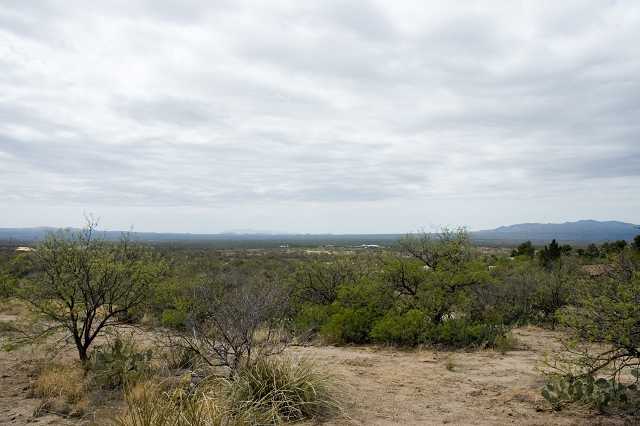
And shortly after I arrived it started a light rain and it was breezy. Not too encouraging but the Clear Sky Clock forecast said it would clear up. After waiting about 30 minutes to see if it got worse, I decided to set up the tent. Since there had been some precipitation I elected to add the "rainfly" to the tent, just in case! Once the tent was set up I took a short nap and woke up about 1600. The skies were clearing!
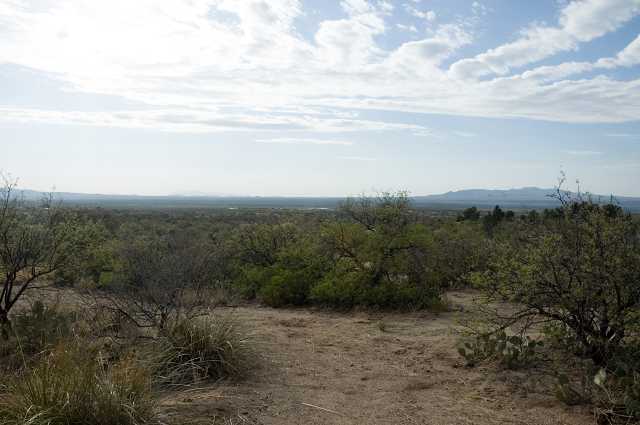
By 1650 I had set up all the equipment (LXD55-8"SC on the left and ETX-105PE in the middle):
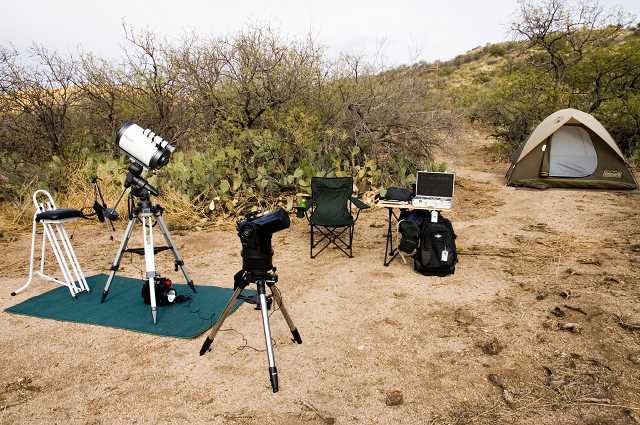
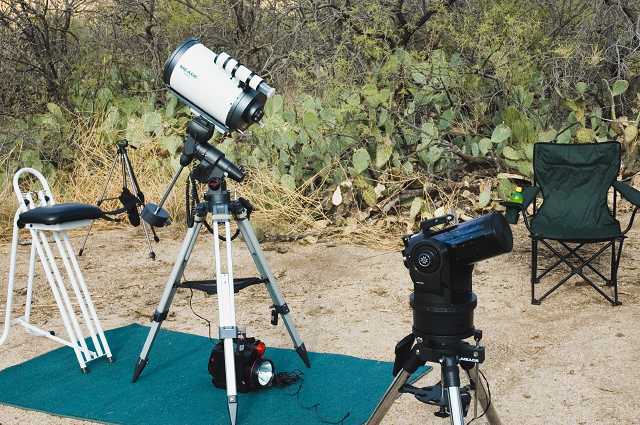
I then took a walk around the property. Here's a view to the East from the fence at the West end of the property:
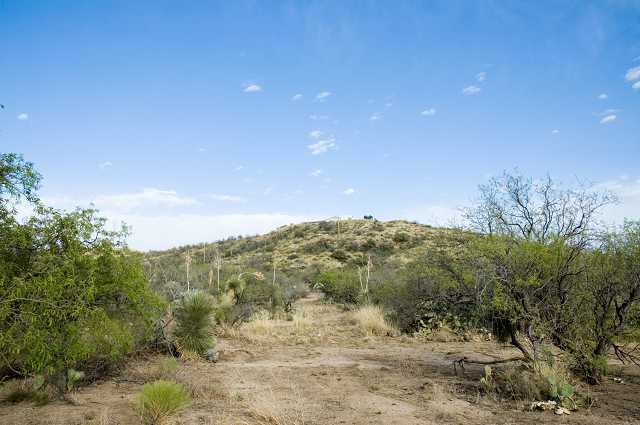
You can just see the tent in the distance near the center of the photo. Here's a photo of one of the many bunnies that visit me during my stays:

For this trip I planned to do more observing than astrophotography but I had some plans for lunar photography using the ETX-105PE. Here's a shot of my Nikon D70 DSLR mounted on the ETX. You can see that it has to be reversed due to the LNT module.
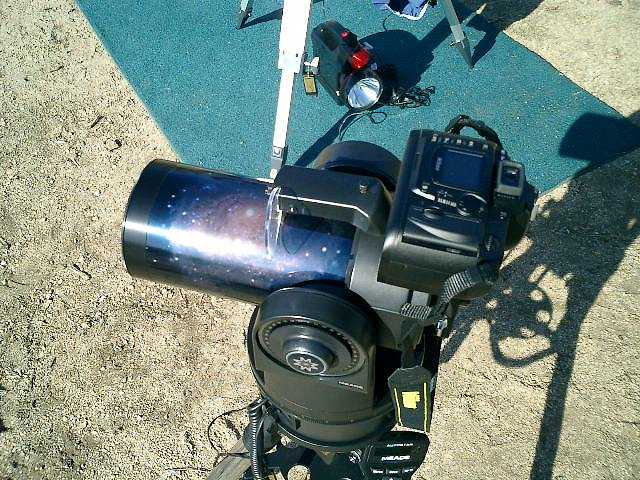
As sunset approached, the temperature dropped somewhat to 58°F but the skies were CLEAR!:
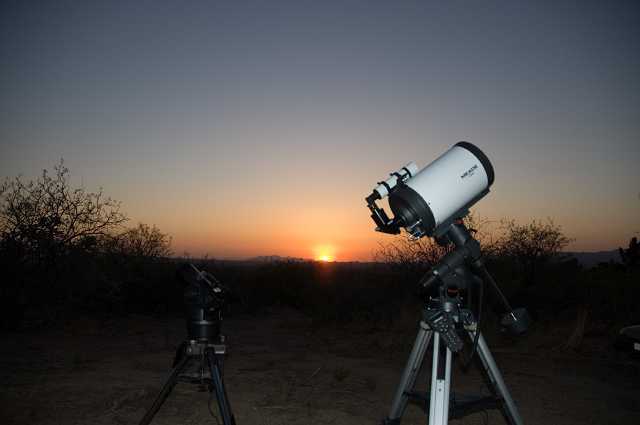
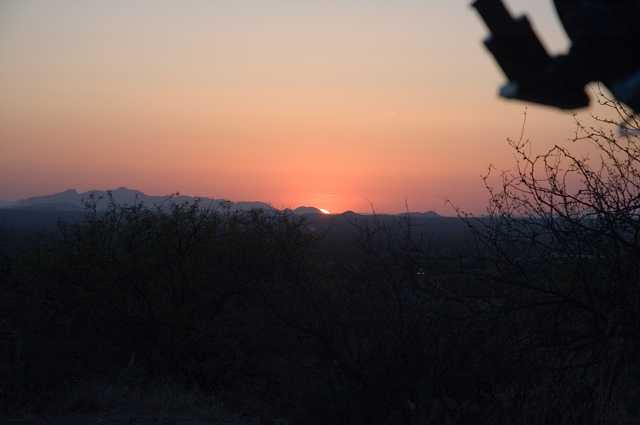
Moon
The Moon was a lovely thin crescent (Moon age about 34 hours) so I decided to take a few photos of it through the ETX-105PE (prime focus) using the D70. Here are two of the best:
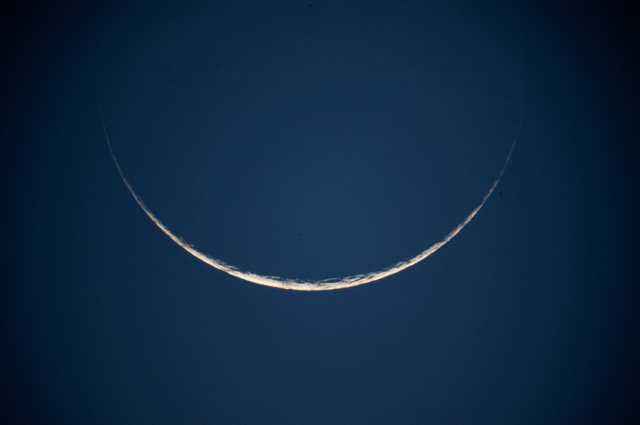
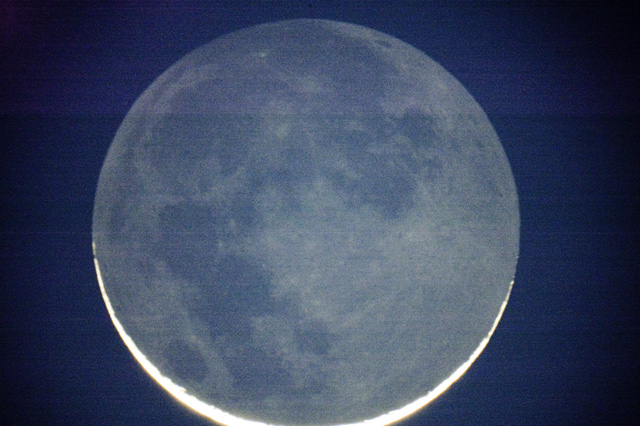
Earthshine was easily captured with a several second exposure at ISO 200 and some post-processing of the RAW image in Adobe Photoshop CS2 (Bridge with Camera Raw).
After I completed the lunar photography with the ETX I spent the next several minutes just viewing the Moon through the LXD55-8"SC. I used a Televue 35mm Panoptic 2" eyepiece, which let me see the entire lunar disk. It was fun watching the Moon as it settled towards the horizon and became more and more "flattened", just like you see when the Sun is setting. Once the Moon was gone I began to use the ETX-105PE as my primary observing scope for this evening.
I had to fuss a little bit with the SmartFinder alignment; apparently it had been knocked out of alignment inside the case I used to hold the ETX during the drive to Oracle Observatory. But once I got it aligned, all was well. Saturn was gorgeous in a 12.4mm eyepiece; Cassini Division, shadows, and a cloud band were easily visible.
I did a new Auto Align (as the first one had been approximate since the Sun hadn't set yet). I then did the "Tonight's Best" Guided Tour. Every object was nearly centered in the 26mm eyepiece! It was incredibly easy to just let the Autostar do its thing and view open star clusters, globular star clusters, and galaxies!!! All the objects were very nice in the ETX. Fun!
As the night wore on, I decided to check out Comet Schwassmann-Wachmann 3, which was in the constellation of Hercules, near M13, the Great Globular Cluster. While the head and a tail were easily visible in the ETX-105, they really stood out in the 8"SC with the 35mm Panoptic eyepiece. The comet could also be seen using 7x50 binoculars. Here's a photo (cropped from the original 3000x2004 RAW image) taken with the D70 piggyback on the LXD55-8"SC:
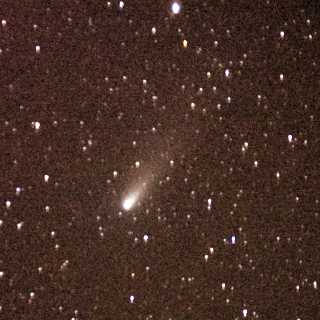
This was a single 5 minute exposure at ISO 1600.
Saturday dawned clear and cool (48°F) but by 0900 MST it had warmed up to 70°F. I did some solar observing using my Coronado PST piggybacked on the LXD55-8"SC:
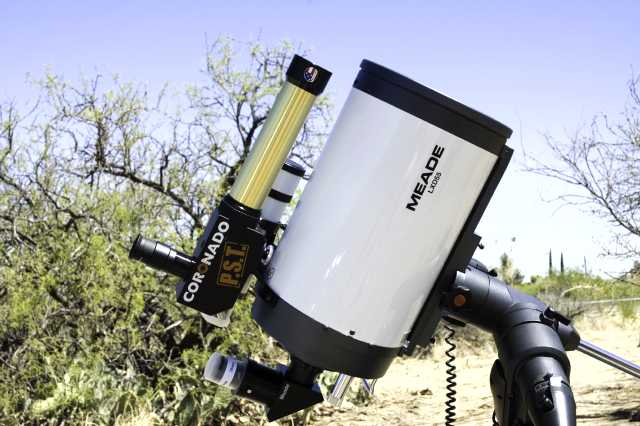
In the PST 12.4mm Kellner eyepiece, lots of details, one very nice sunspot, and a nice loop prominence were easily visible. Using a 6.4mm Super Plossl eyepiece, the loop prominence was easily viewed. I did notice that the Meade 12.4mm Super Plossl eyepiece presented a brighter, more detailed view than the 12.4mm Kellner that comes with the PST. I viewed the sun again after about 4 hours and there was a definite change in the loop prominence.
Well, not only did I observe our Sun, but I put it to work as well! I recently purchased a Solio solar charger for my iPod mini and this was its first use. And it worked great! I was able to fully charge my iPod back up (after draining its power the night before listening to "The Lone Ranger" old time radio show. While the iPod was charging I could also continue to listen to the Lone Ranger and continued to use the iPod after the Sun went down. Here you can see the Solio and iPod charging, along with my Sony speakers:
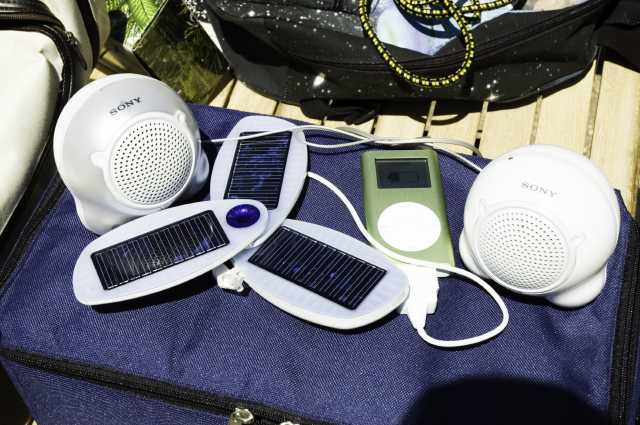
The temperature reached 80°F during the day. As the Sun disappeared behind the distant mountains I was able to observe the "green flash" through binoculars. This was the first time I have managed to see it!
Saturday night was the LXD55-8"SC night. The crescent Moon was still a nice object to view and photograph through the LXD55-8"SC at Prime Focus and Prime Focus with a 2X Barlow Lens with my Nikon D70 DSLR. Here are some of the photos. The first was done in the ETX-105 at Prime Focus for comparison to the 8"SC at Prime Focus (the 2nd image); the last three images employed a 2X Barlow Lens:
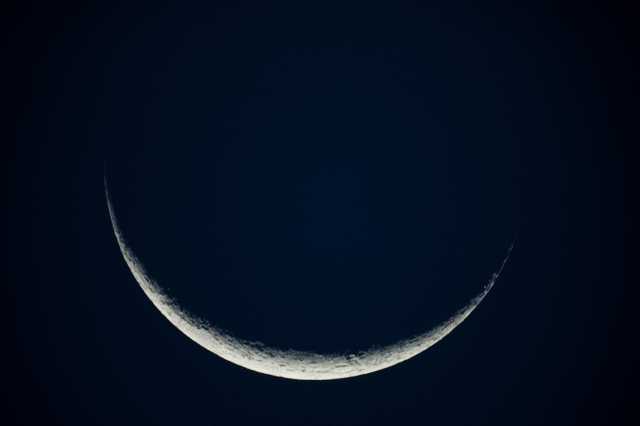
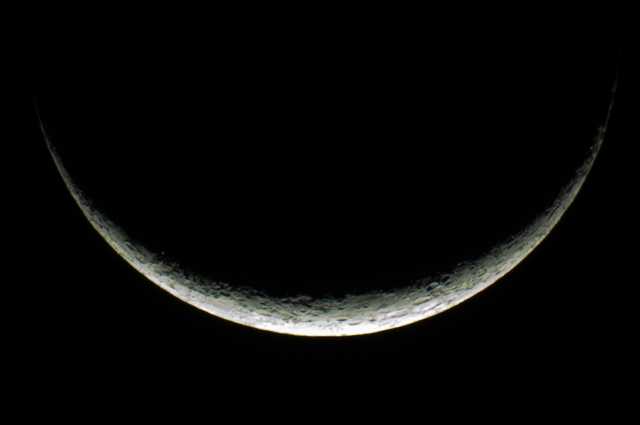
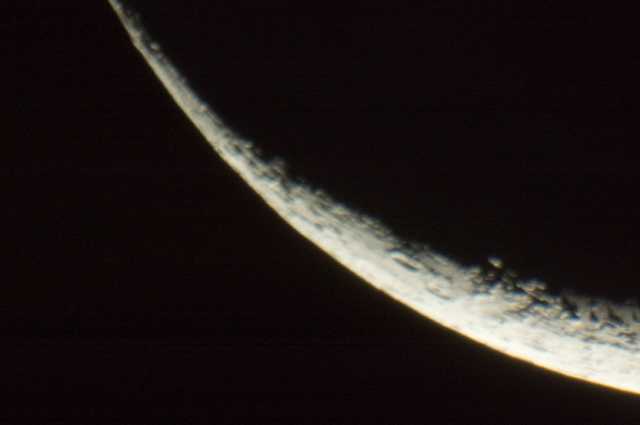
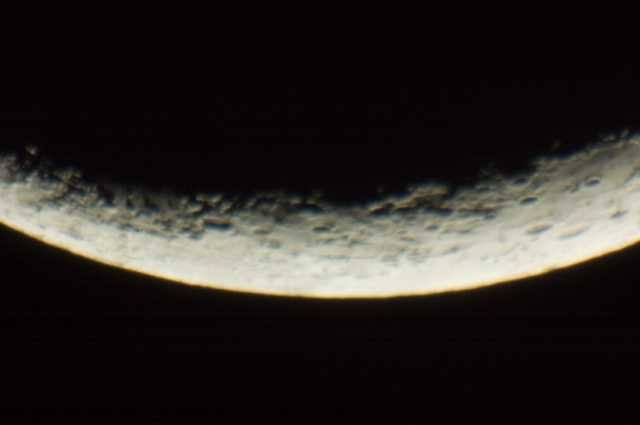
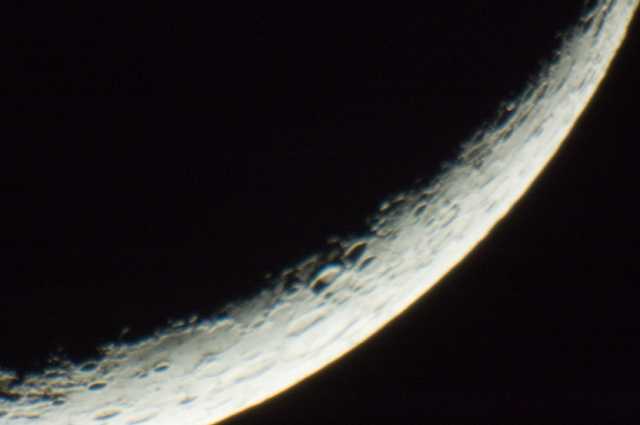
Later that evening I did some observing of Saturn and Jupiter, and of course, the Comet, which had moved somewhat since the previous night. I also did some deep sky observing with the 8"SC. I finally closed down for the night about midnight (temperature 60°F).
This was a fun trip to Oracle Observatory. For my next trip, I plan to take my 8"SC telescope with my new (I pick it up this weekend) LXD75 mount (to replace the LXD55 mount). Until next time...
Return to the top of this page.
Return to the Oracle Observatory Main Page.